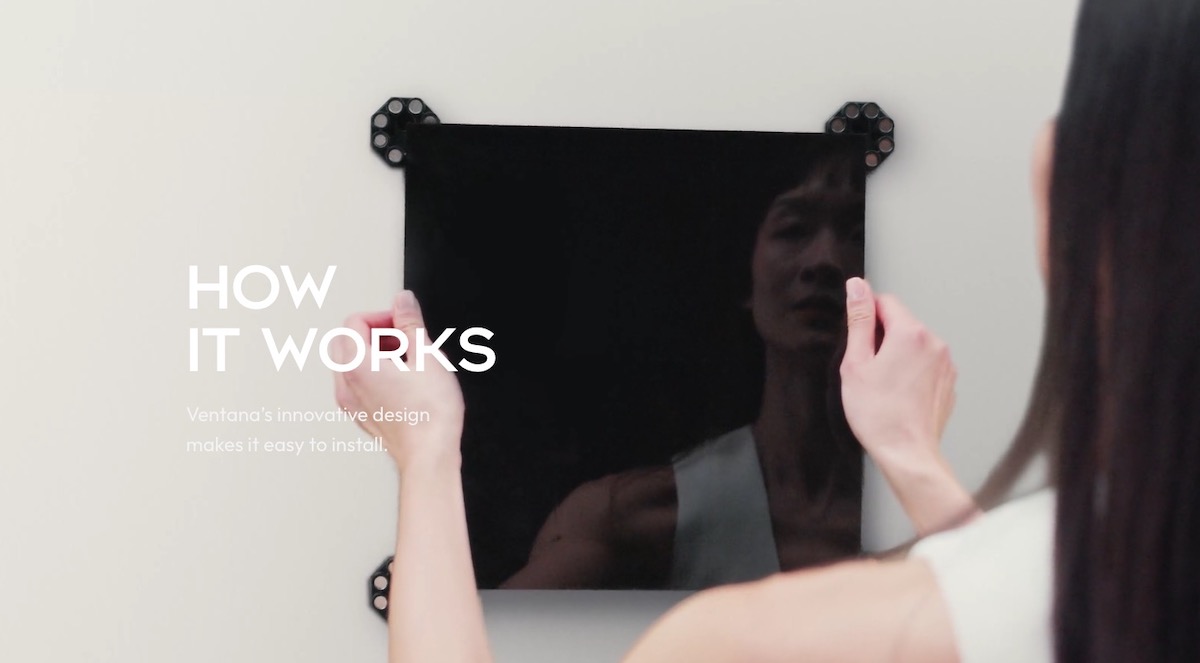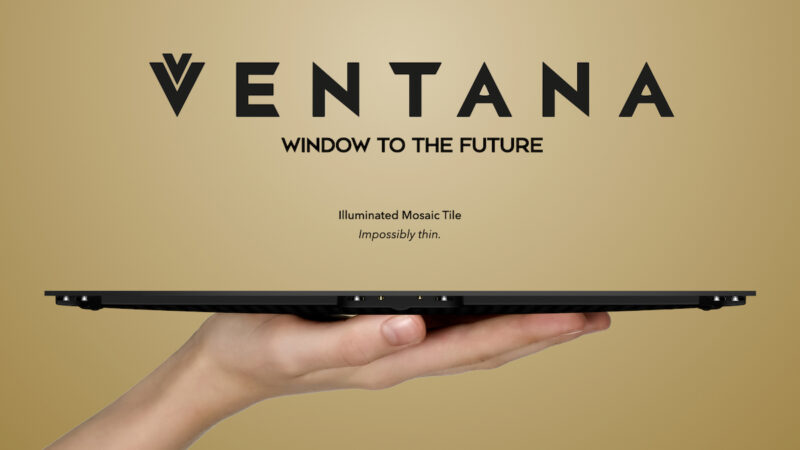
LED Displays Have Advanced So Much They Now Emulate Form Factor Of Architectural Tile
November 22, 2023 by Dave Haynes
Ever since the Comcast Tower lobby experience was switched on 15-plus years ago in Philadelphia, it’s been evident that LED would eventually be a design consideration and wall finish for architects and the people who do the final look for built spaces.
That first job applied a very big grid of Barco LED cabinets to the back wall of the office tower lobby, and made the LEDs look like the wood finish on the lobby side walls.
Some 15 years on, we’re now seeing LED products emerge that take on the shape of building materials, and have been conceived of and engineered with architects and designers in mind. So the shift has started from thinking about where a video wall fits in a built space to a wall or other built surface being all digital.
The LA company Ventana has started marketing a product that has the look and dimensions of glossy black wall tiles that snap into place and precisely align and connect using magnets.
The company says its same-named Ventana tiles are 75% thinner and 90% lighter than more conventional LED products, and that they have been purpose-designed and manufactured to integrate with modern interiors. The form factor is a bit reminiscent of an iPad.

From Ventana’s marketing:
Ventana is a stunningly high quality direct-view LED display in the format of an ultra-thin architectural tile. An innovation that is set to transform physical placemaking in luxury residential and hospitality projects.
Architects and interior designers can now embrace entirely new realms of creativity in their designs. Imagine hyper-vivid, brilliant digital images dancing across a sumptuous glossy-black surface. Once staid walls can now become a magic canvas for whatever media a designer’s imagination may wish:
- Gorgeous large-format art;
- Beautiful animated wallpaper and tessellated patterns;
- A massive canvas for endless feeds of digital content.
Ventana’s tiles are 15mm thick, which is about .6 of an inch. They have a glossy, liquid-black surface and a pixel pitch of 0.8mm, which is super-fine. The company says the light emitters are MicroLED. In the video below you can see one of these finished tiles has six rectangular modules tiled together on the glossy surface.
That glossiness does make me a bit nervous, as I have seen some product like Sony’s early Crystal LEDs that looked spectacular but picked up and reflected every light in an Apple store. However, Ventana says there is also a matte black version, which would calm down refelectivity.
What’s particularly interesting here is the underlying video processing technology. Just about everyone selling LED display hardware uses third-party video processing hardware, but Ventana is a direct product of Megapixel, a company that specializes in Hollywood-grade image-processing technology. I have seen at trade shows what high-end processing software and hardware can to amplify and optimize visuals.
So this is much more than just a clever new physical design for LED cabinets. It’s a system.
I was in China about six years ago and saw some of the first iterations of what started to be called Glue On Board – square LED modules that had some sort if epoxy coating that protected those modules from damage and liquids. They tiled together on larger LED cabinets.
That tech had me immediately thinking that it foreshadowed where LED technology would go for designed spaces, and now we’re seeing that play out.
Certainly there are all kinds of other innovations happening in the physical design of LED displays, in terms of form factor, how they go up and how they connect. LED cabinets are much thinner and lighter than in the past, and lots of premium products have hardened coatings and deep black between the LEDs. But this stuff looks genuinely different and super-interesting.
I assume Megapixel and Ventana will be at ISE in 10 weeks or so, either directly or in a partner stand. If so, that’s a must-see.



Leave a comment